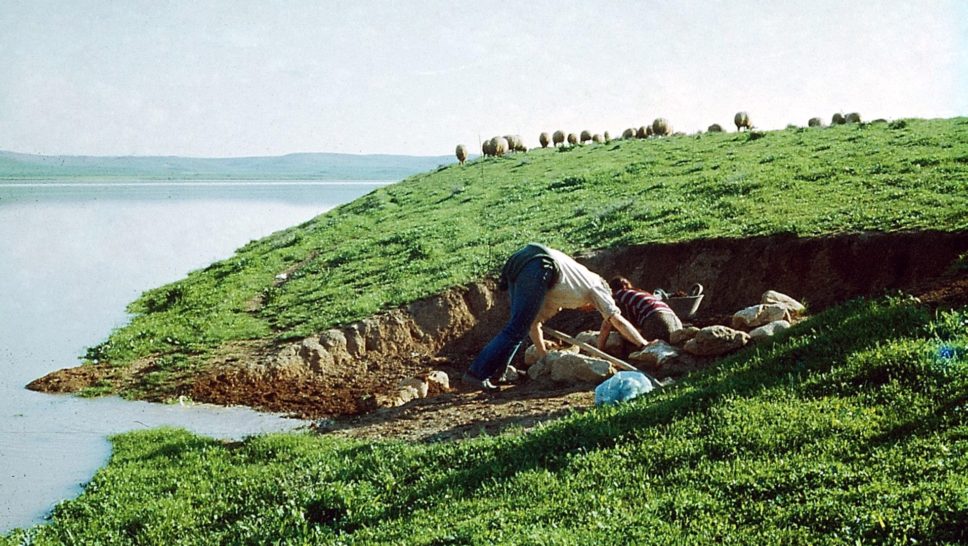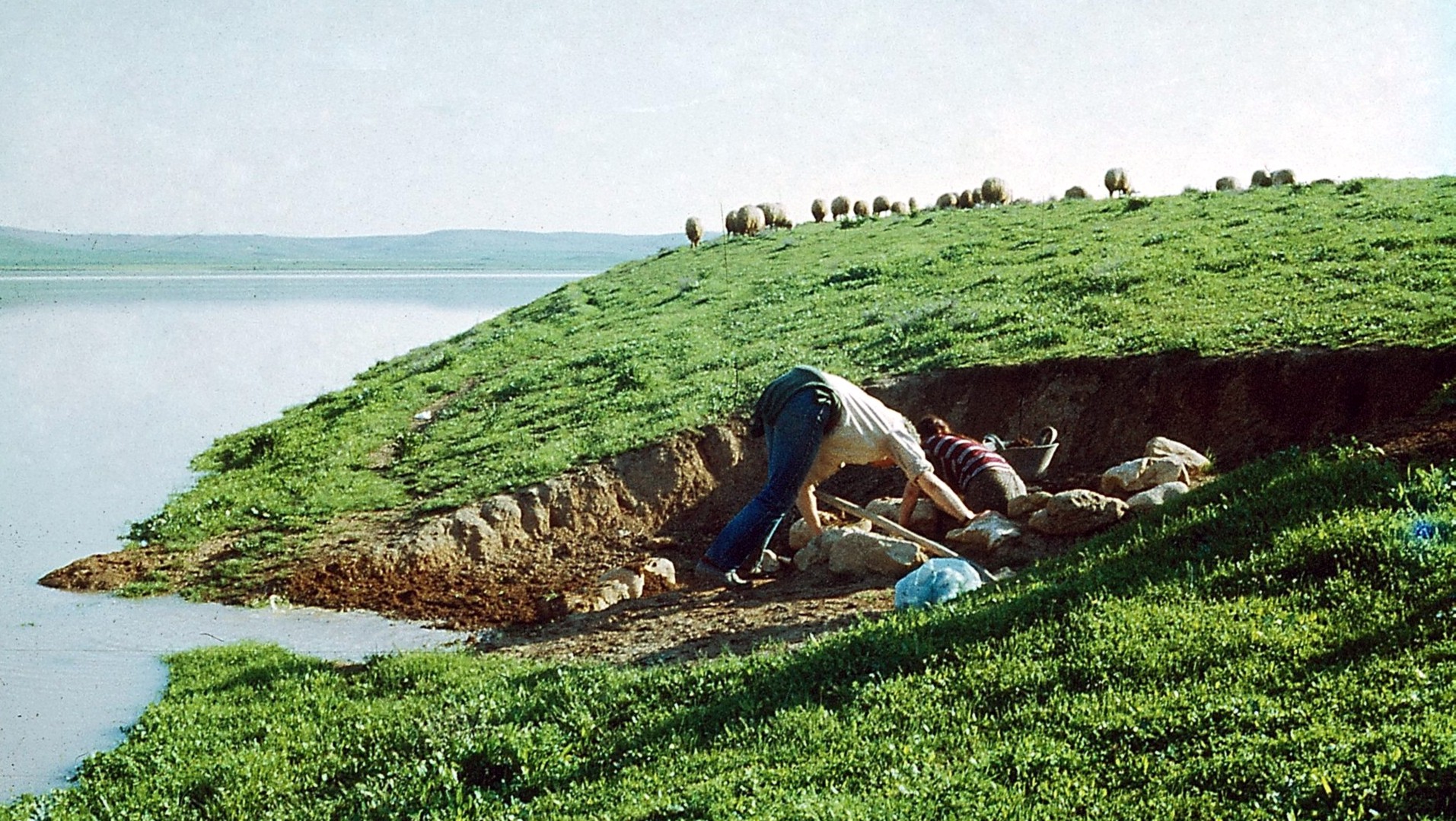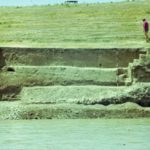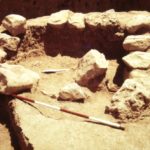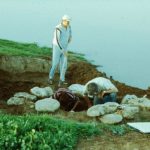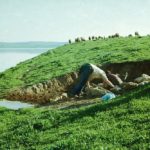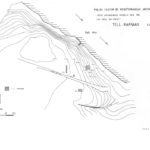Tell Raffaan
Tall Raffan
Tall Rafân
-
Project name:
Eski Mosul Dam Salvage Project
-
Site type:
Settlement and burial ground
Location:
Iraq
Right bank of the Upper Tigris in the Nineveh Governorate
Upper Mesopotamia, AssyriaDating:
– Chalcolithic, early Uruk period, 3800–3500 BC
Most interesting finds:
– Cist grave from the Uruk period (4th millennium BC)
– Obsidian tools
History of research:
Dates of PCMA research:
1984–1985
Type of research:
Excavations
Project directors:
Piotr Bieliński
Ryszard Mazurowski
Waldemar Chmielewski
Partners:
– Polish Centre of Mediterranean Archaeology of the University of Warsaw
– Directorate of Antiquities of the Republic of Iraq
Description of site and research results:
Polish excavations started in the spring of 1984 in the microregion of the Raffaan village on the right bank of the Tigris. It is naturally closed off from the south by low hills rising in a curve from the riverbank. Four settlement sites were identified there: Tell Raffaan, Tell Rijim, Tell Sand and Khirbet Mulali. There were also Palaeolithic sites discovered on the hills.
The Polish mission excavated in Tell Raffaan and Tell Rijim and surveyed the Palaeolithic sites. Piotr Bieliński directed the excavations and Ryszard Mazurowski was in charge of the survey, although Waldemar Chmielewski was formal director of the project. In Tell Saud and Khirbet Mulali worked Iraqi archaeologists. Tell Raffaan lay about 400 m east from the village of Raffaan on a small promontory hill rising 12 m above the river bank. Its steep slope faced the river. As there was a modern cemetery in the western part of the site, only its eastern part was excavated. It turned out to be very badly eroded. No traces of buildings were found in the trenches, only a large number of fragmented pottery vessels, flint sickle inserts and numerous obsidian flakes and tools. The most interesting find was a skeletal grave in stone setting, discovered on the eastern slope of the hill and furnished with three undecorated cups. The pottery found on the site was dated to the early Uruk period (3800–3500 BC).
Ławecka, D. (2019). Late Chalcolithic pottery from Tell Raffaan (Eski Mosul Dam Project) in: Pieńkowska, A., Szeląg, D., Pieńkowska, A. (eds), Stories told around the fountain. Papers offered to Piotr Bieliński on the occasion of his 70th birthday, Warsaw: PCMA, WUW, 393–418.
Bieliński, P. (1992). Tell Raffaan and Tell Rijim – first season of Polish excavation in the Eski Mosul Region – Iraq. Études et Travaux, 16, 273–278.
Bieliński, P. (1992). Tell Rijim and Tell Raffaan 1985 – two campaigns of Polish excavations in Northern Iraq. Études et Travaux, 16, 279–288.
Reiche, A. (1989–90). Polskie wykopaliska w rejonie Eski-Mosul w północnym Iraku w latach 1984–1987. Rocznik Muzeum Narodowego w Warszawie, 33–34, 653–671.
Bieliński, P. (1987), Tell Raffan and Tell Rijim 1984–1985: Preliminary report on two seasons of Polish excavations in the Saddam Dam Project Area, w: Researches on the Antiquities of Saddam Dam Basin Salvage and other Researches, (pp. 13–19). Baghdad: State Organization for Antiquities and Heritage.
Mazurowski, R. (1987), Preliminary report on two seasons of survey investigations in the Raffaan Microregion 1984–1985, w: Researches on the Antiquities of Saddam Dam Basin Salvage and other Researches, (pp. 20–23). Baghdad: State Organization for Antiquities and Heritage.
Bieliński P. (1987). Tall Rafân and Tall Rigm, two seasons of Polish Excavations, 1984–1985, Archiv fur Orientforschung, 34, 206–208.
Kozłowski, S.K., Krogulska, M., Reiche, A., Szymczak, K. (1986). Irak, w: Kiss, Z. (red.) 50 lat polskich wykopalisk w Egipcie i na Bliskim Wschodzie, Warszawa: PCMA, 135–142.
Gallery:
-
1. Archaeological section of the site on the bank of the Tigris. Przekrój archeologiczny przed stanowisko tuż nad brzegiem Tygrysu. (fot. A. Reiche)
-
2. Grave in stone setting from the early Uruk period (3800–3500 BC. Grób w obstawie kamiennej z wczesnego okresu kultury Uruk (3800–3500 p.n.e.). (fot. A. Reiche)
-
3. “Salvage” exploration of a grave from the Uruk period during high tide on the Tigris.„Ratunkowa” eksploracja grobu z okresu Uruk już podczas przyboru wody w Tygrysie. (fot. F.M. Stępniowski)
-
4. “Salvage” exploration of a grave from the Uruk period during high tide on the Tigris. „Ratunkowa” eksploracja grobu z okresu Uruk już podczas przyboru wody w Tygrysie. (fot. F.M. Stępniowski)
-
5. Plan of the site. Plan stanowiska. (rys. P. Bieliński)

